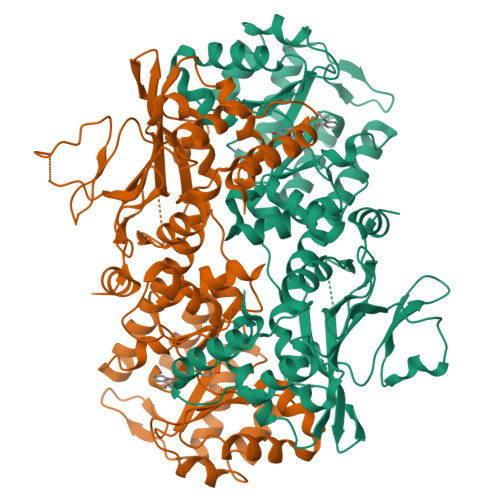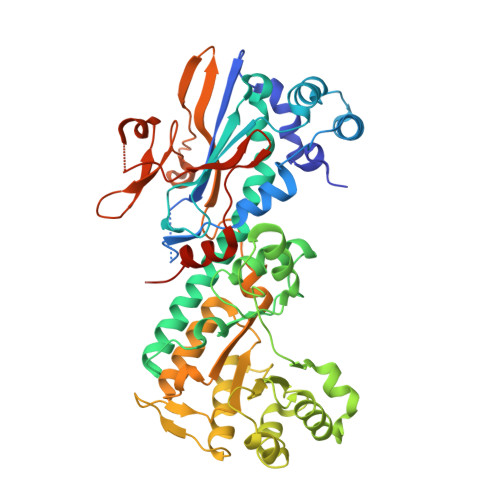Discovery of small-molecule activators of nicotinamide phosphoribosyltransferase (NAMPT) and their preclinical neuroprotective activity.
Yao, H., Liu, M., Wang, L., Zu, Y., Wu, C., Li, C., Zhang, R., Lu, H., Li, F., Xi, S., Chen, S., Gu, X., Liu, T., Cai, J., Wang, S., Yang, M., Xing, G.G., Xiong, W., Hua, L., Tang, Y., Wang, G.(2022) Cell Res 32: 570-584
- PubMed: 35459935
- DOI: https://doi.org/10.1038/s41422-022-00651-9
- Primary Citation of Related Structures:
7ENQ - PubMed Abstract:
The decline of nicotinamide adenine dinucleotide (NAD) occurs in a variety of human pathologies including neurodegeneration. NAD-boosting agents can provide neuroprotective benefits. Here, we report the discovery and development of a class of potent activators (NATs) of nicotinamide phosphoribosyltransferase (NAMPT), the rate-limiting enzyme in the NAD salvage pathway. We obtained the crystal structure of NAMPT in complex with the NAT, which defined the allosteric action of NAT near the enzyme active site. The optimization of NAT further revealed the critical role of K189 residue in boosting NAMPT activity. NATs effectively increased intracellular levels of NAD and induced subsequent metabolic and transcriptional reprogramming. Importantly, NATs exhibited strong neuroprotective efficacy in a mouse model of chemotherapy-induced peripheral neuropathy (CIPN) without any overt toxicity. These findings demonstrate the potential of NATs in the treatment of neurodegenerative diseases or conditions associated with NAD level decline.
Organizational Affiliation:
School of Pharmaceutical Sciences, Beijing Advanced Innovation Center for Structural Biology, Ministry of Education Key Laboratory of Bioorganic Phosphorus Chemistry and Chemical Biology, Tsinghua University, Beijing, China.



















